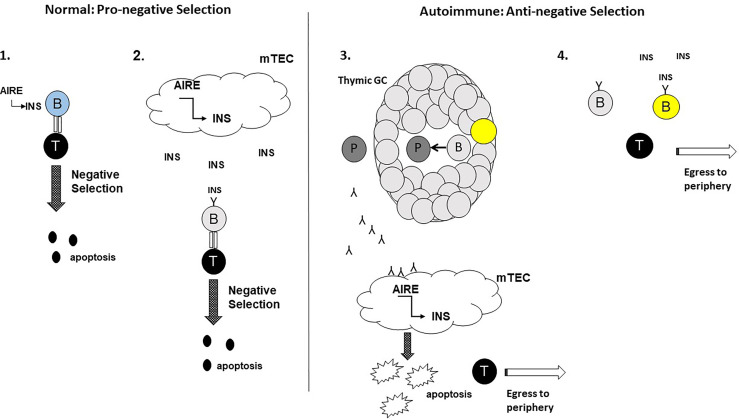Figure 1.
Potential roles for thymic B cells in the thymic negative selection process: a hypothesis. In the normal setting, thymic B cells enhance the negative selection of autoreactive T cells. 1. Aire+ Thymic B cells (blue) express and present self-antigens e.g. insulin (INS) to autoreactive T cells with high affinity TcRs for the self-antigens leading to T cell apoptosis. 2. Self-antigens e.g. INS secreted by Aire+ mTECs are acquired by thymic B cells expressing self-reactive BcRs (light grey). Internalisation, processing and presentation of the self-antigen to autoreactive T cells leads to T cell apoptosis. In the autoimmune setting, thymic B cells impede the negative selection of autoreactive T cells. 3. The emergence of thymic GCs results in thymic B cells receiving signals to develop into plasma cells (dark grey) secreting autoantibodies for self-antigens expressed by mTECs. Binding of the autoantibodies to mTECs leads to mTEC apoptosis, leading to decreased negative selection of autoreactive T cells and increased egress of the T cells to the peripheral tissues. 4. Somatic hypermutated (yellow) thymic B cells egressing from thymic GCs, may outcompete ‘normal’ thymic B cells for the binding of self-antigen in the thymic milieu impeding negative selection. For this scenario, the sm thymic B cells would either fail to adequately present the self-antigens to autoreactive T cells to support negative selection.

